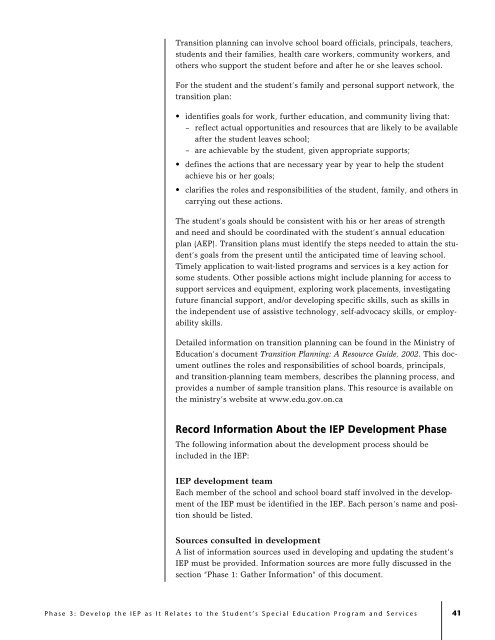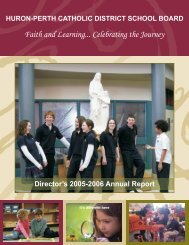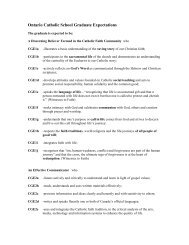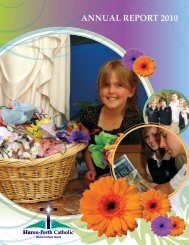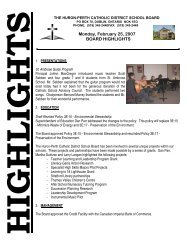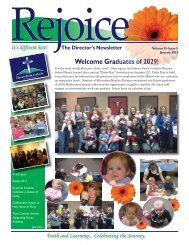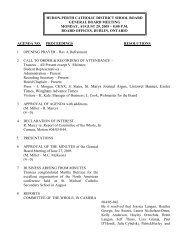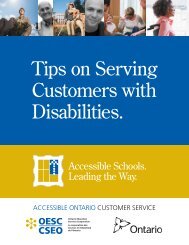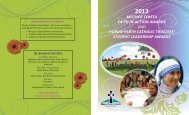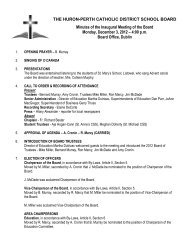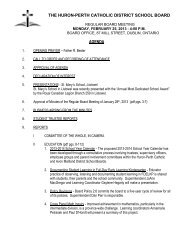The Individual Education Plan (IEP) - A Resource Guide, 2004
The Individual Education Plan (IEP) - A Resource Guide, 2004
The Individual Education Plan (IEP) - A Resource Guide, 2004
Create successful ePaper yourself
Turn your PDF publications into a flip-book with our unique Google optimized e-Paper software.
Transition planning can involve school board officials, principals, teachers,<br />
students and their families, health care workers, community workers, and<br />
others who support the student before and after he or she leaves school.<br />
For the student and the student’s family and personal support network, the<br />
transition plan:<br />
• identifies goals for work, further education, and community living that:<br />
– reflect actual opportunities and resources that are likely to be available<br />
after the student leaves school;<br />
– are achievable by the student, given appropriate supports;<br />
• defines the actions that are necessary year by year to help the student<br />
achieve his or her goals;<br />
• clarifies the roles and responsibilities of the student, family, and others in<br />
carrying out these actions.<br />
<strong>The</strong> student’s goals should be consistent with his or her areas of strength<br />
and need and should be coordinated with the student’s annual education<br />
plan (AEP). Transition plans must identify the steps needed to attain the student’s<br />
goals from the present until the anticipated time of leaving school.<br />
Timely application to wait-listed programs and services is a key action for<br />
some students. Other possible actions might include planning for access to<br />
support services and equipment, exploring work placements, investigating<br />
future financial support, and/or developing specific skills, such as skills in<br />
the independent use of assistive technology, self-advocacy skills, or employability<br />
skills.<br />
Detailed information on transition planning can be found in the Ministry of<br />
<strong>Education</strong>’s document Transition <strong>Plan</strong>ning: A <strong>Resource</strong> <strong>Guide</strong>, 2002. This document<br />
outlines the roles and responsibilities of school boards, principals,<br />
and transition-planning team members, describes the planning process, and<br />
provides a number of sample transition plans. This resource is available on<br />
the ministry’s website at www.edu.gov.on.ca<br />
Record Information About the <strong>IEP</strong> Development Phase<br />
<strong>The</strong> following information about the development process should be<br />
included in the <strong>IEP</strong>:<br />
<strong>IEP</strong> development team<br />
Each member of the school and school board staff involved in the development<br />
of the <strong>IEP</strong> must be identified in the <strong>IEP</strong>. Each person’s name and position<br />
should be listed.<br />
Sources consulted in development<br />
A list of information sources used in developing and updating the student’s<br />
<strong>IEP</strong> must be provided. Information sources are more fully discussed in the<br />
section “Phase 1: Gather Information” of this document.<br />
Phase 3: Develop the <strong>IEP</strong> as It Relates to the Student’s Special <strong>Education</strong> Program and Services<br />
41


